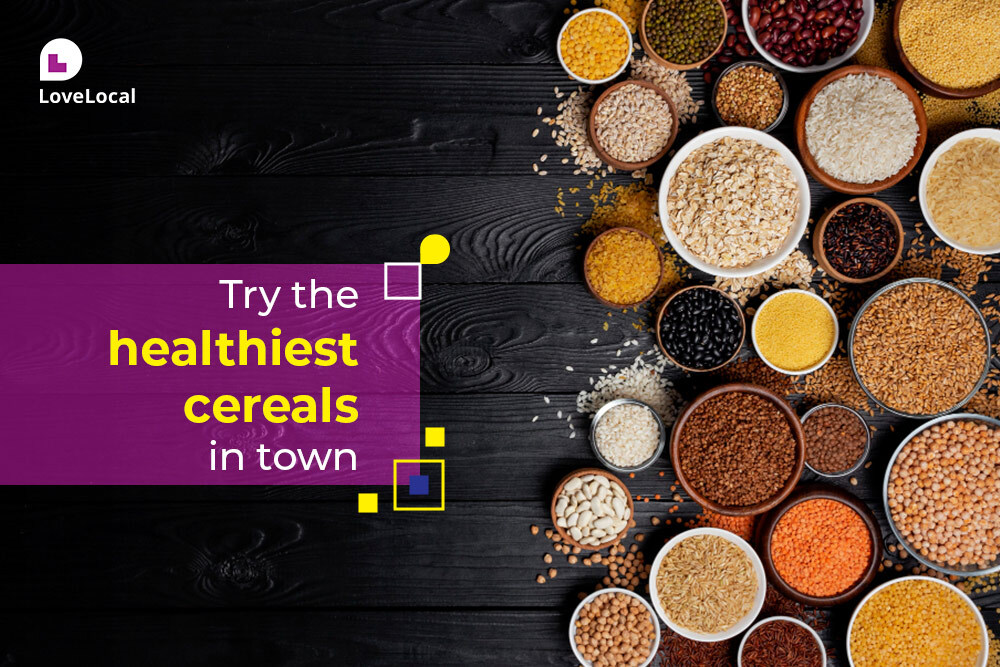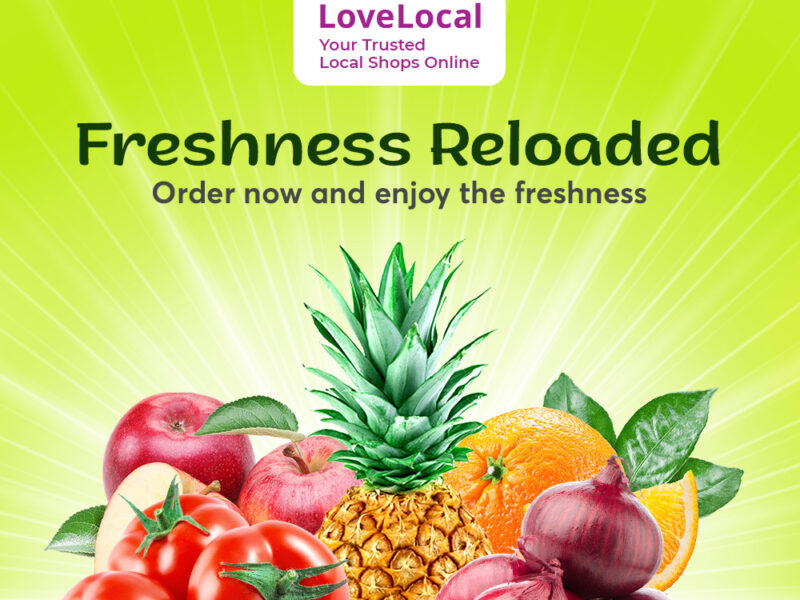Cereals are frequently the first thing that comes to mind when thinking of a healthy breakfast or mid-afternoon snack. Different types of cereals are regarded as one of the go-to alternatives when attempting to stay healthy because of their health advantages and ability to keep you satiated for longer.
The edible seeds or grains of the Gramineae grass family are known as cereals. Rye, oats, barley, maize, triticale, millet, and sorghum are among the cereals farmed in many nations. Cereals are often regarded as nutrient-dense staple meals in both industrialized and poor countries. Cereals and cereal products are high in calories, carbohydrate, protein, and fibre, as well as a range of micronutrients like vitamin E, several B vitamins, magnesium, and potassium.
Here are different types of cereals and their health advantages in this post, so you can select the ones that are best for you and your health.
| Cereals chart with names and nutritional information | ||
| Cereal | Hindi Name | Calories (per 100gm) |
| Wheat | Gehun | 332 |
| Rice | Chawal | 151 |
| Barley | Jau | 352 |
| Maize | Makai | 96 |
| Quinoa | Quinoa | 120 |
| Rye | Rye | 335 |
| Oats | Jai | 389 |
| Millet | Bajra | 360 |
| Buckwheat | Kuttu | 343 |
| Sorghum | Jowar | 361 |
Here are different types of cereals
1. Wheat

Wheat is the world’s most extensively planted grain crop. It has grown in popularity as a result of the numerous culinary uses it provides. Wheat enhances digestive health and facilitates digestion. It’s high in nutrients that are good for your heart. It has the potential to reduce the risk of obesity.
- The majority of the fat is unsaturated, making it low in fat.
- Sodium-free and potassium-rich.
- B-group vitamins include thiamin, riboflavin, niacin, vitamin B6 (pyridoxine), folate, and pantothenic acid.
- All of the elements are present, including iron, zinc, magnesium, phosphorus, and selenium.
- High in carbohydrate (mainly starch) and dietary fibre (insoluble).
2. Rice

Rice (oryza sativa) is a cereal grass seed. It is one of the most significant types of cereals and dietary carbohydrates in the world, since it is consumed by more than half of the world’s population. Rice may be processed into a gluten-free flour after being cooked or steamed. Many cuisines, including those of India, China, and Southeast Asia, use it as a main ingredient. The following are some of the key components found in rice:
- Fibres in the diet
- Zinc, magnesium, iron, calcium, phosphorus, and selenium are minerals.
- Vitamin B1, vitamin B2, vitamin B3, vitamin B6, vitamin E, and vitamin K are only a few of the vitamins available.
- Antioxidants-flavonoids
- Proteins
- Important Fatty acids
3. Barley

Barley is an Asian cereal grain that was one of the first to become extensively planted. It is also one of the most ancient types of cereals. Barley is used in a restricted number of bread recipes due to its reduced gluten concentration. As a result, barley is now consumed by fewer individuals in wealthy countries. Despite this, barley’s high beta-glucan content has led to its inclusion in health-promoting diets, particularly those geared toward cardiovascular health.
The following are some of its health advantages:
- It’s high in vitamins, minerals, and other plant chemicals that are good for you.
- It includes lignans, an antioxidant that has been associated to a reduced risk of cancer and heart disease.
- It has the potential to improve the health of your intestines.
- Beta-glucans may aid in cholesterol reduction.
4. Maize

One of the most tasty grains is corn (also known as maize). It’s the juvenile version of the iconic yellow corn on the cob. It is used in the same manner that other grains are used to manufacture grain dishes like morning cereal once it has matured and dried. Corn is remarkable in that it requires human aid to reproduce. Because it is widely used in food production, it is one of the most important crops on the planet.
Here are some of corn’s health benefits:
- Corn has a high fibre content, which aids digestion.
- Corn is high in B vitamins and critical minerals including zinc, magnesium, copper, iron, and manganese, all of which are beneficial to your general health.
- Corn is high in the antioxidants carotenoids, lutein, and zeaxanthin, all of which are beneficial to eye health.
- Corn’s insoluble fibre may help reduce the risk of colon cancer.
- Corn’s fibre content may aid weight control by improving post-meal feelings of fullness.
5. Quinoa

Quinoa is a famous health food all over the world. Quinoa is gluten-free, rich in protein, and one of the few plant foods that contains all nine necessary amino acids in sufficient amounts. Fiber, magnesium, B vitamins, iron, potassium, calcium, phosphorus, vitamin E, and other antioxidants are also found in it.
Here are a few of quinoa’s health benefits:
- Quinoa contains a lot of flavonoids including quercetin and kaempferol. These are potent antioxidants found in plants that have a wide range of health advantages.
- Quinoa includes soluble fiber, which can help lower cholesterol, lower blood sugar, and aid weight reduction.
- Quinoa is a protein-rich grain that also includes important amino acids.
- Quinoa has a low glycemic index, making it ideal for controlling blood sugar levels.
- Quinoa’s rich nutritional content may also help with metabolic wellness.
6. Rye
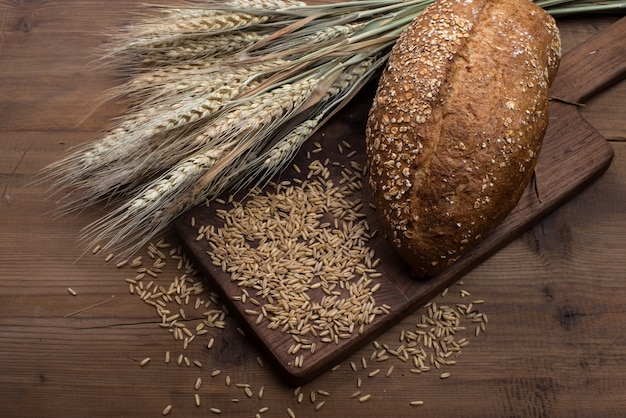
Rye flour has less gluten than wheat flour, resulting in a denser rye loaf. The sourdough process is used to make traditional rye bread, which has a somewhat sour flavour. Rye is unique among cereals in that its endosperm and bran contain a significant amount of fibre. As a result, rye products have a lower glycemic index (GI) than wheat and other grains.
The following are some of rye’s health benefits:
- It’s high in fiber, which helps to stimulate digestive movement and prevent constipation.
- It has a reduced glycemic index and is appropriate for those who have type 2 diabetes.
- It helps to lower high LDL cholesterol levels.
- It is high in vitamins and minerals, particularly those belonging to the B group.
- It lowers the risk of cardiovascular disease and gallstone formation.
7. Oats

Because the bran and germ of oats are seldom removed during processing, most foods labeled as ‘oats,’ ‘oat flour,’ or ‘oatmeal’ are really whole grain oats. Oats are abundant in beta-glucan, a soluble fiber found in the bran and endosperm layers of the oat grain.
Oats provide a number of health advantages, including:
- Oats include beta-glucan, which helps blood sugar regulation after meals.
- Oats also improve insulin sensitivity.
- Oats aid in the reduction of cholesterol levels.
- Oats contain avenanthramides, which protect blood arteries from the harmful effects of LDL cholesterol.
8. Millet
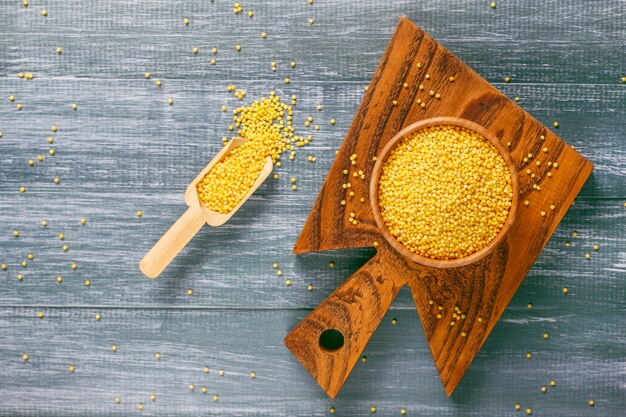
Millets are tiny, round-shaped coarse types of cereals with an excellent nutritional profile that are native to India. It’s a drought- and pest-resistant crop that thrives in arid environments with inadequate soil. Millet is a part of the Poaceae family, yet it comes in a variety of colours, shapes, and species. Ragi, foxtail millet, pearl millet finger millets, proso millets, small millets, Kodo millets, and barnyard millets are only a few of the millets available. All of these grains have one thing in common: great nutritional value.
Here are a few of millets’ health benefits:
- Millets are nutrient-dense, gluten-free, and have a low glycemic index, which helps to keep blood sugar levels in check.
- Millets are good for your digestive health and can help you lose weight for a long time.
- Millets are high in beta-glucans, flavonoids, and anthocyanidins, all of which help to prevent heart disease and stroke.
- Millets have been shown to suppress the development of malignant cells in several organs in studies.
- Millets are high in dietary fibre, which aids digestion and supports the general health of other critical organs.
9. Buckwheat

Buckwheat is a gluten-free pseudo-cereal that belongs to the Polygonaceae family. Buckwheat grain is a nutrient-dense grain with a long list of health advantages. It is grown as a grain in popular buckwheat in many countries. It includes certain high-level nutritionally helpful components and may have extra features as a functional meal. Buckwheat is gluten-free, making it an ideal dietary option for persons with celiac disease or gluten sensitivity.
Buckwheat has a number of health advantages, including:
- Buckwheat is a rich source of fiber and may offer heart-health advantages.
- It helps to enhance digestive health since it is high in fibre and niacin.
- Buckwheat has a lot of protein, which aids with weight loss by increasing satiety.
- Buckwheat can assist you in controlling your blood sugar levels.
- Buckwheat is an excellent complement to a gluten-free diet for celiac disease sufferers and for the relief of other common diseases.
10. Sorghum
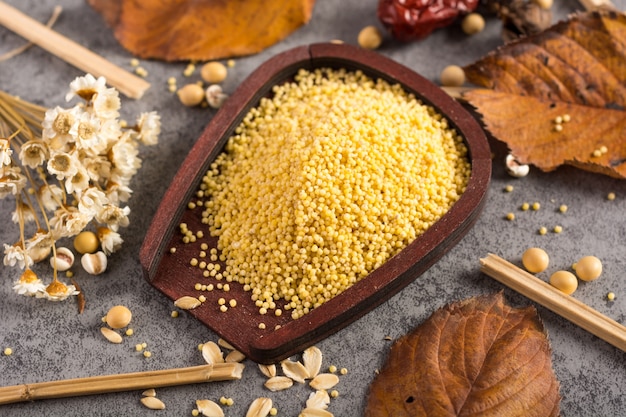
Because of its gluten-free, whole grain deliciousness, jowar, often known as sorghum in English, is commonly considered as the “new quinoa.” As consumers move away from processed wheat products, which are not considered nutritious, the ancient grain, a member of the millet family, is witnessing a resurgence. Jowar is a desired grain for excellent health due to its high nutritional content.
Here are a few of jowar or sorghum’s health benefits:
- Jowar contains 3-Deoxyanthoxyanins (3-DXA), which may prevent cancer tumour development.
- It has the ability to protect against diabetes and insulin resistance.
- It can aid in the control of cholesterol levels.
- Manganese, which is abundant in jowar, aids in the maintenance of calcium levels in the body by increasing calcium absorption.
All these types of cereals are easily available throughout India. Order them from LoveLocal and get them delivered to your doorstep in no time! Shop for the best cereals from your trusted local retailer’s shop on LoveLocal!
Grains, Oils and Masalas
Dals, Pulses
Ready to Eat
Cereals, Muesli And Oats

